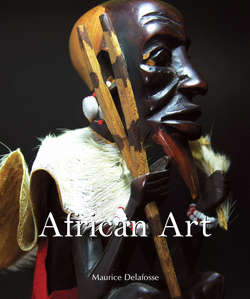Читать книгу African Art - Maurice Delafosse - Страница 5
На сайте Литреса книга снята с продажи.
Origins and Prehistory
Origin of the Negro Peoples of Africa
ОглавлениеThe object of the present work being thus defined, we must now begin by seeking to find out whence came the African Negroes. But is it possible to commit oneself as to their first origin? It seems that the actual state of our knowledge does not permit us, as yet, to answer this question in a definitive or even a satisfactory manner.
Undoubtedly, one would not have even asked the question if Africa were the only part of the world to possess Negroes. But such is not the case and without speaking, of course, of the countries where the advent of the Negro race has taken place only at a recent epoch, as the result of migrations which were generally involuntary and whose genesis and circumstances are known, as in America, we know that the reputed autochthonous inhabitants of lands far removed from Africa and separated from it by the entire width of the Indian Ocean are considered as belonging to the Negro race for the same reasons as are the Negroes of Mozambique and of Guinea.
Edjo statue (Urhobo).
Nigeria.
Wood, pigment, height: 212 cm.
Each Urhobo community has its own protective Edjo statue, which embodies natural spirits or those of the Eshe founding ancestors. The tall Urhobo statues embody Edjo natural spirits or Eshe founding ancestors, who were offered annual celebrations and sacrifices in sanctuaries. Each community has its own protective Edjo, who lives in the wild and can also be materialised by pieces of wood, metal, or clay. These statues carry medicines on their belts and have military attributes.
Statue (Vezo).
Wood, height: c. 57 cm.
Private collection.
Sakalava rules the region in which the Vezo population resides. These uniquely shaped statues likely played a funerary role, though it is impossible to know whether the strange positioning is the result of time or the artist’s will.
Figurine, 9th century CE.
Northern Province, South Africa.
Clay, 20 × 8.2 × 7 cm. On loan from the National Cultural History Museum, Pretoria.
From a much larger collection, originally excavated from the Schroda farm along with the Lydenburg Heads, these figures are thought to be the best known artefacts from the Early Iron Age which indicate ritualistic behaviour. Ethnographers suggest that unusual figurines such as these likely imply the sites of former initiation schools for girls. Schroda, serving as a regional capital, was occupied by 300 to 500 people, which means large initiation schools were probably there and further explains the copiousness of these small clay sculptures. As a whole, they can best be divided into three groups, realistic and stylised anthropomorphic (male and female), zoomorphic (including birds, elephants, cattle, and giraffe), and mythological.
